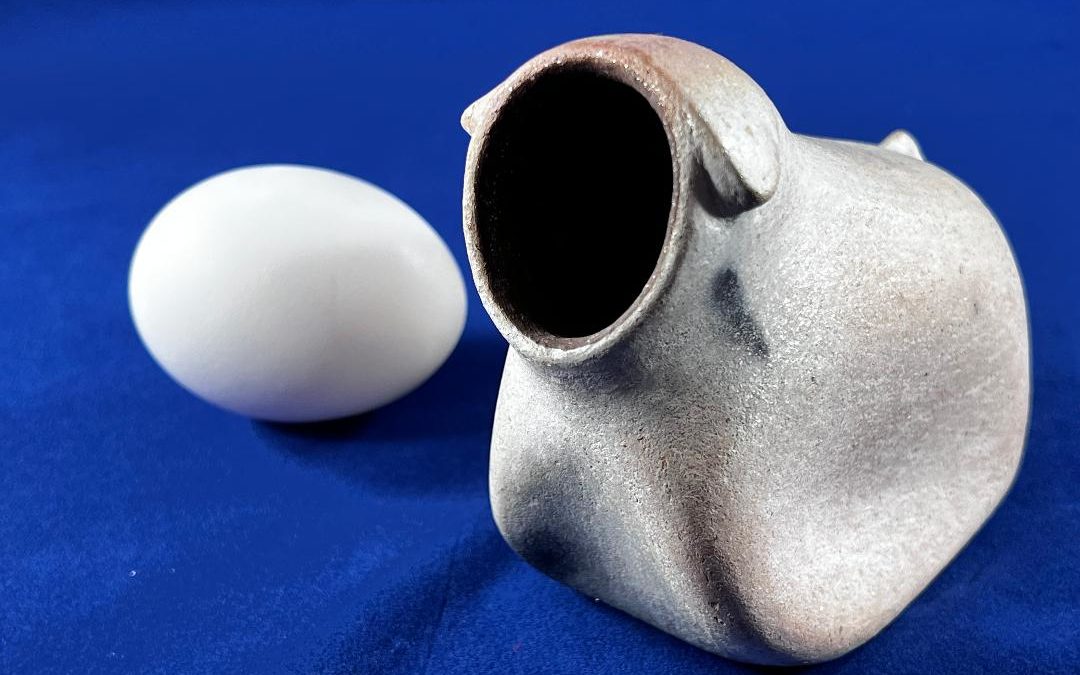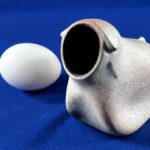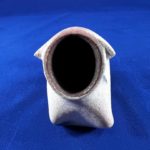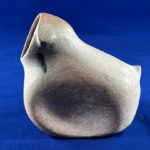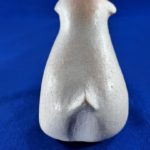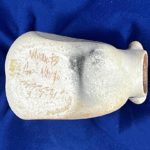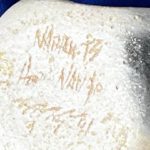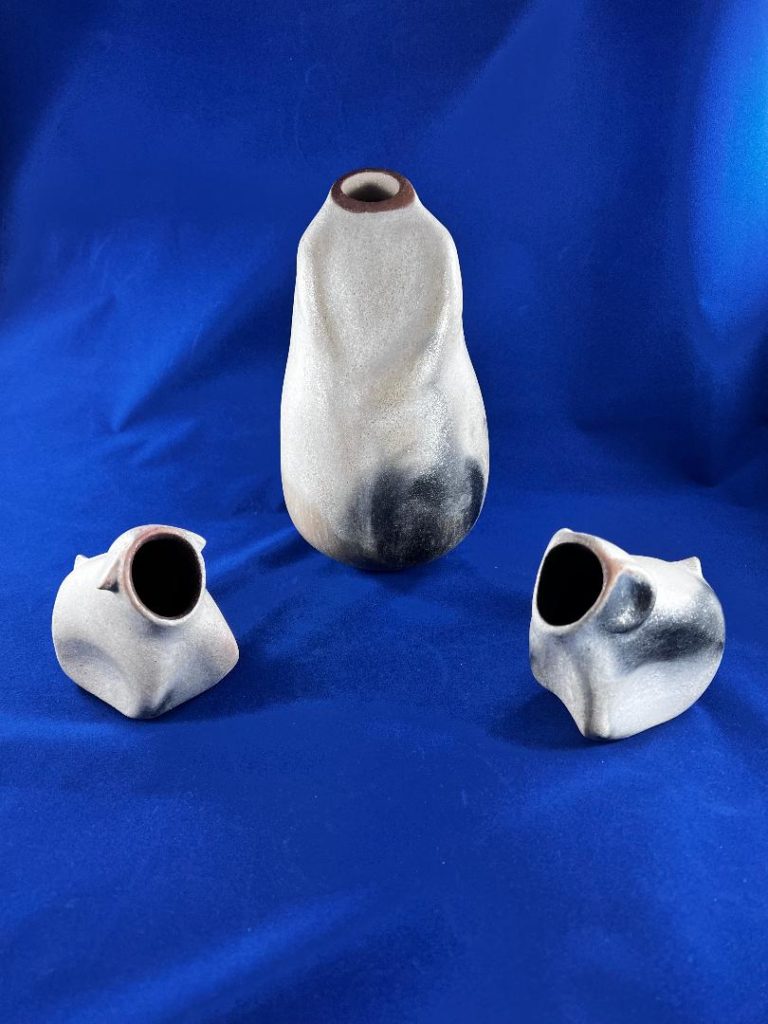
This is the second of three catalog entries about this group of pottery. Each begins with the same introduction.
Carrying almost no design except for burn marks, with only subtle suggestions of form, this small grouping of effigies stands in stark contrast to the 11 other beautifully decorated pots by Nathan Begaye in this collection. At first look these unpainted pots seem plain and uninteresting, like a Zen rock garden without flowers. 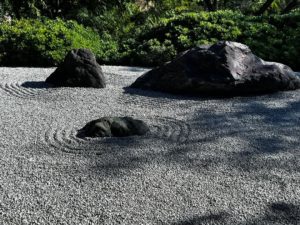
Spend some quiet time with this sheep herder and her flock, however, and these three enigmatic pots become immanent, evocative, and somewhat disturbing.
Their maker was a prodigy and an irascible human being whose conflicted life spun out-of-control and who died young. Among his oeuvre, this unpainted set might be unique; at least I have never seen another like it. Nathan was born to a Hopi mother and a Navajo father. Although his pottery is characterized by its tremendous variation in form and design, all other examples of Nathan’s pottery that I am aware of draw from his Hopi ancestry and carry pueblo-derived iconography. In contrast, both the theme and fabrication of the three pots under the rubric 2022-16 reflect his Navajo heritage.
Although they are a set, the three effigies will be discussed in separate catalog entries as items 2022-16a, 2022-16b and 2022-16c. I tried writing them as one entry, but found the result so complex that it was awkward.
Bisque-fired ewe:
Form:
All four sides of this ewe effigy are dimpled, thus highlighting its legs and hindquarters. Small triangular projections represent the ears and tail. Unlike the shepherd, the head is represented, its mouth gaping open and obliterating other facial features.
Design:
For some reason there is a small patch of turquoise paint just above the figure’s right ear and near the edge of the mouth. It is so tiny that it does not reach the standard of “decoration,” but it is there. Sometimes Nathan would paint a swab of new clay on the hidden surface of a pot to see what color it would fire, That may be the case here.
As with the shepherd, the natural tan color of the clay body has been slipped white, with mica dust creating a micaceous glitter. At the top of the head the white slip did not cover the tan clay beneath. The tan clay body is also slightly visible on the ewe’s left front leg. The inscription on the bottom also scratches through the white slip, revealing the tan clay. The format of this inscription is the same as we have seen before:
- Nathan B
- Hopi Navajo
- cloud cypler
- 3-7-91
….the last line being the date of creation.
Unlike the other two figures in the set, this ewe effigy shows only one slight firing smudge. Still, this one black mark is enough to certify that it too was fired within a Navajo ceramic tradition.
Design analysis:
The body of this animal is carefully formed. Although much smaller than its guardian shepherd (2022-16a), this figure of a female sheep has more detail of definition than its human companion. The gender of this ewe figure is indicated by its lack of horns. Although the shepherd lacks a head and the ewe has one, they both display the same large unnatural gaping opening in place of a traditional face. This large mouth is disturbing, perhaps a bellow of great fear or pain. In contrast, the soft form of the figure is sensuous and calming. Although small, sitting alone the ewe has a large visual impact. As part of a three effigy set, it speaks to relationship, shelter, and fear.

